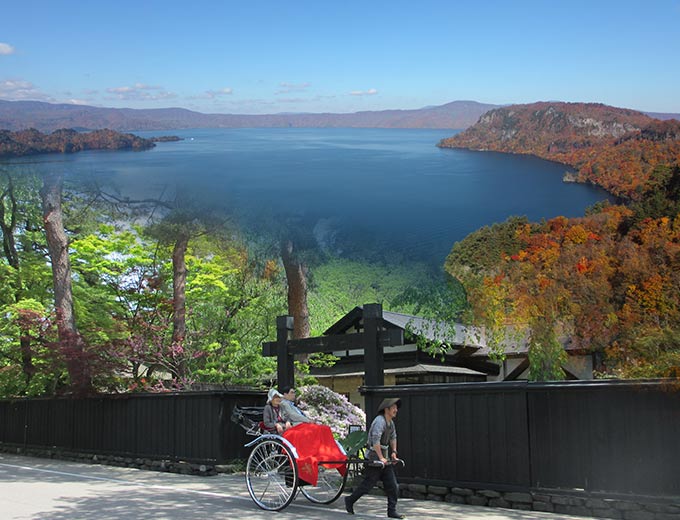
Sightseeing

The area has many places to enjoy the great outdoors, history, and culture, like the World Heritage Chuson-ji Temple and Tono.
Hiraizumi

“The Cultural Heritage of Hiraizumi” is an Iwate Prefecture tourist destination. It was listed as a World Heritage Site at the 35th World Heritage Committee in Paris, France, in June 2011. Haraizumi has a diverse and beautifully preserved group of temples, gardens, and ruins that was designed to mimic the ideal world of Pure Land Buddhism.
Kamaishi

Kamaishi is home to various ruins in addition to the three oldest Western-style blast furnaces in Japan, constructed by Takato Oshima. The city’s Hashino Iron Mine and Blast Furnace Site was registered to the World Heritage List as part of “Sites of Japan’s Meiji Industrial Revolution: Iron and Steel, Shipbuilding and Coal Mining ” in July 2015.
Tono

Tono is located in Iwate Prefecture’s interior. As the setting for Kizen Sasaki’s “Legend of Tono,” it is known as a land of folklore and mythical creatures like water goblins, protective child spirits, and the domestic god Oshirasama. Tono is endowed with the rich natural landscapes of days gone by. Its “Tono Furusato Village” brings to life local farming villages and the Japanese countryside of old. Features like their “Garden of Tradition” pass the crafts, events, and daily culture of the past on to the region and posterity.
Matsushima *Miyagi Prefecture

Matsushima is a group of around 260 islands of various sizes in the vicinity of Miyagi Prefecture’s Matsushima Bay. It’s counted as one of the three most scenic spots in Japan. Matsushima is a popular tourist destination, with four great scenic points called the “Shidaikan.” It is also home to Zuiganji Temple, which was built in 1609. Its Godaido Hall is only open to view once every 33 years
Tazawa Lake *Akita Prefecture

The lapis lazuli water of Tazawa Lake is connected to the legend of Princess Tatsuko. The lake’s circumference is approximately 20 kilometers; with a depth of 423.4 meters, it’s Japan’s deepest lake. The changing scenery of the seasons delight its visitors.
Kakunodate *Akita Prefecture

Kakunodate flourished as a castle town ruled by the Satake clan. It still retains the character of a mid-19th century samurai town, with many residences, gates, storehouses, and other architecture and features of the streetscape preserved. Kakunodate is also a famous cherry blossom viewing spot.
Hirosaki *Aomori Prefecture

Every year a cherry blossom festival is held at Hirosaki Park for about two weeks from the end of April. There are about 2600 cherry trees in the park that all burst into bloom at once. At the western moat, the blossoms arch overhead like the roof of a tunnel.
Lake Towada *Aomori Prefecture, Akita Prefecture
Lake Towada
*Aomori Prefecture, Akita Prefecture

Lake Towada (Aomori Prefecture, Akita Prefecture), Oirase Gorge (Aomori Prefecture)
Lake Towada and the Oirase Gorge is a scenic area in Towada Hachimantai National Park where you can enjoy the natural beauty of the seasons. Lake Towada spans the prefectures of Aomori and Akita; take in the scenery from pleasure boats that ply Honshu’s northernmost mountain lake. You can also enjoy the beauty of the Oirase Gorge that runs about 14 km from Mt. Yakedake to Towada Lake at Nenokuchi
Mt. Haguro *Yamagata Prefecture

The Dewasanzan peaks of Mt. Haguro, Mt. Yudono, and Mt. Gessan are known as one of Japan’s main training grounds for mountain ascetics. Along the roughly 2km path from Zuishinmon Gate to the summit, there are 2,446 stone steps; the over five-hundred 350 to 500-year-old cedar trees that line the path to the top constitutes a national natural monument. A shrine dedicated to the gods of the three area mountains known as Sanjingosaiden is at the summit.









